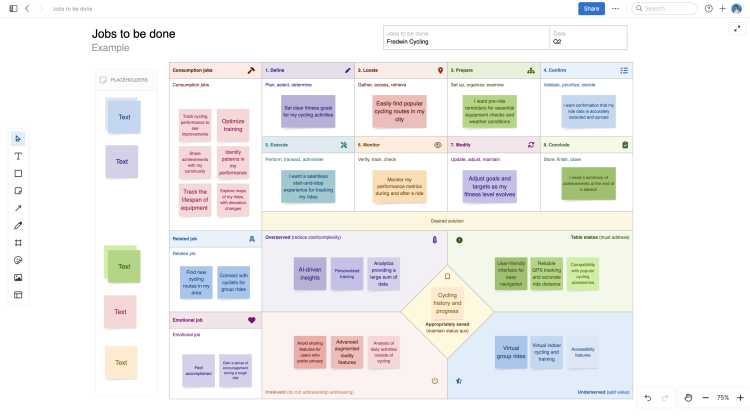Jobs to be done template
Prioritize what to build based on specific customer "jobs" or challenges
Use template
About the jobs to be done template
Product managers use a variety of prioritization frameworks to determine what customers need and how you can help them achieve their goals. What makes the jobs-to-be-done (JTBD) framework distinct is its emphasis on delivering meaningful outcomes — based on specific jobs or actions that customers need to complete.
This JTBD template helps you define and categorize those jobs. When using it, consider more than just the functional aspects of a job — for instance, the emotional and social dimensions that influence customer decisions. Sometimes, true competition is not another product but the struggle or inconvenience your customers face daily.
Identifying and addressing these needs leads to better solutions. This methodical approach not only streamlines decision-making but also shifts your perspective to creating products that customers truly want.
Best practices
Align your efforts with the genuine needs and desires of customers.
Center the customer Keep your focus on the user and their perspective. Articulate the functional and emotional aspects of the jobs they are trying to fulfill.
Bring in the team Schedule sessions with cross-functional teams to collectively review and refine details. Encourage team members to add comments, share insights, and highlight areas that require deeper discussion.
Move ahead Establish routine reviews of jobs to be done. Continue to refine the whiteboard in response to an evolving market and user feedback — ensuring it remains a dynamic source of information.